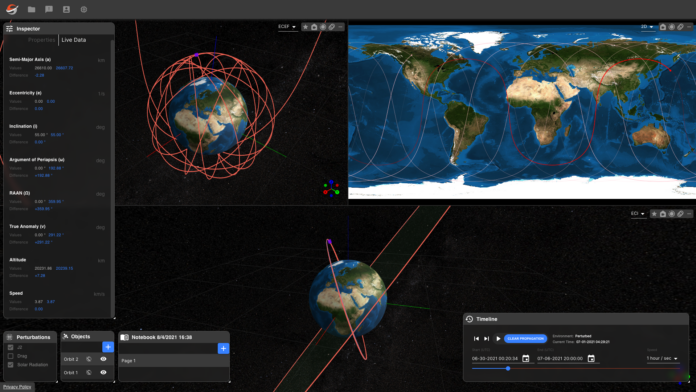Space agencies and commercial launch providers made 2021 a record-breaking year for space flight, launching more than 130 spacecraft and deploying thousands of satellites.
With all these flying objects, Earth’s orbits are becoming crowded. Slingshot Aerospace Inc., based in El Segundo and Austin, Texas, is developing technology to address precisely this issue, and the company announced March 10 that it had raised $25 million in new funding to build its base of customers and enhance its signature collision avoidance system.
This system, called Slingshot Beacon, allows government agencies and commercial operators to access key positional data and to communicate with one another to mitigate the risk of in-space impacts.
The United Nations Office for Outer Space Affairs has indexed more than 12,000 objects launched into space since the dawn of space flight, and the growing challenge of avoiding impacts adds layers of complexity to the already difficult task of deploying and maintaining satellites.
Slingshot Chief Executive Melanie Stricklan said other collision warning systems were designed during an earlier era of spaceflight, prior to a recent wave of satellite deployments fueled by the demands of the telecommunications industry and the success of commercial launchers such as Hawthorne-based Space Exploration Technologies Corp.
“Antiquated architecture is not cutting the mustard,” said Stricklan. “We can provide much more accurate information as it pertains to operating spacecraft in orbit.”
Stricklan said the system parses through busy situational data and allows users to coordinate with one another in order to make adjustments necessary to reduce risk of impact. This technology, said Stricklan, is becoming increasingly vital as more technology on Earth – from mobile phones to military communications equipment – becomes dependent on signals from satellites.
“This is one of the biggest problems facing humanity today,” said Stricklan. “We’re completely dependent on these assets in orbit, and as the risk increases, so does the risk of not having them to depend on.”
In the 1970s, NASA scientist Donald Kessler warned that space debris generated through collisions could create conditions that would render operation of satellites in specific orbits difficult or even impossible. Stricklan said this scenario is what Slingshot’s technology is designed to prevent.
“It’s not if but when (Kessler syndrome) occurs if we don’t understand where precisely things are in relation to one another,” she said.
Slingshot was founded in 2017 and initially worked on the development of Slingshot Beacon and on geospatial technology with applications on Earth as well as in space. In 2021, the company announced that it would focus exclusively on its space business.

